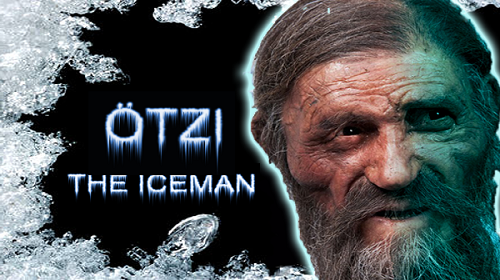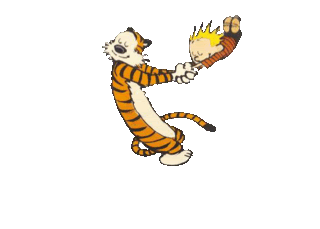History's Oldest Murder Mystery
"Otzi the Ice Man"
Welcome to another glorious week, dear class. Get ready for some interesting activities, videos, readings, and a one-of-a-kind real "cold case." It promises to be an activity-packed week, so get ready to learn something AMAZING!
NOTE: If a video doesn't look like it belongs with a lesson, hit refresh. My videos are switching themselves around--I'm not sure if it's just me or it's happening to other people. . .
ASSIGNMENTS FORNOTE: If a video doesn't look like it belongs with a lesson, hit refresh. My videos are switching themselves around--I'm not sure if it's just me or it's happening to other people. . .
THE WEEK OF
SEPTEMBER 14-18

SOCIAL STUDIES
Monday: More amazing caves to view before our assignment: CAVE ART! (Be on the lookout for something you might like to try drawing!)
Lascaux
Chauvet
- A look at cave art must include a visit to the 14,000 year-old Bull and Cow Bison found in the Le Tuc d'Audoubert Cave in Ariege, France.
- The Cosquer Cave in Marseille, France is the only cave in the world with an entrance 115 feet below present-day sea level where cave art has been preserved from the flooding that occurred when the seas rose after the end of the last glaciation. (Clottes & Courtin 1994, 1996)
- Along northern Spain's Cantabrian Sea coast, the cave called El Castillo has the oldest dated cave paintings--the oldest being a simple red disk. At more than 40,800 years old, it pre-dates other European art by at least 4,000 years. This date coincides with the earliest known evidence for Homo Sapiens in Europe. Because of its age, it is the best evidence yet that Neanderthals might have been the first actual cave painters.
El Castillo
We've discussed and analyzed amazing cave art from thousands and thousands of years ago. It's given us a glimpse into what life was like back then. Cave art was a very important way for early man to communicate what was important--may-be it was the first true narrative, telling the story of fantastic hunts -- or maybe it just represented a way for early humans to say, "I was here."
Wednesday: This is the perfect time to pursue a great murder mystery! You and your fellow classmates are going to embark on a fascinating study of the world's oldest mummy and the mysterious events leading up to his death. Are you ready??
We begin our story. . .
PBS NOVA
An Ice Man Murder Mystery
Aren't you curious?? I AM! Check out these sites if you want to learn more:
- Ice Man PowerPoint HERE
- Got 3-D glasses? You can view a 3-D Otzi HERE.
- So much information about Otzi can be found HERE (including something about a curse. (Scroll to the bottom.)
- A National Geographic photo-story can be found HERE.
~
Thursday: Read THIS article and complete THIS cloze.
In Focus: Otzi the Ice Man
Friday: Solve the Murder!

So, how do you think Otzi died? What makes you think so? Read and discuss the following theories.
After evaluating and discussing the four theories about Otzi’s death,
- determine which one makes the most sense to you.
- Provide evidence from what you have learned about Otzi to back up your choice.
- You will also need to address reasons why you think the remaining theories are not correct.
Type your response in a well-constructed paragraph following the guidelines above.
SCIENCE
Did you ever wonder? . . .
And now, brought to you by (ta-da!)
Calvin and Hobbes:
Calvin and Hobbes:
The Basis for the Scientific Method!
Formulating the question:
Doing a little research:
Formulating an hypothesis:
Conducting experiments:
Analyzing data:
Reporting conclusions:
Tuesday:
We've been learning about Observations and Inferences, so let's see how much you remember! Test yourself with THIS activity. We'll discuss it when you're done. Then we'll try THIS one together.

Wednesday: Health Pretest

Thursday:
ON TO THE NEXT GREAT THING. . .
Understanding Variables
Independent Variable: An independent variable is one that you can control or change.
For example: you could do an experiment on the effect of sunlight on plant growth by putting one plant in a sunny window with plenty of light and the other in the back of your closet next to the pizza boxes, dirty gym socks, and that homework you said your dog ate. Hmm. . .
Dependent Variable: The dependent variable is the variable that you observe and measure. You can't change this one.
You have no control over the plant; it's going to do what it's going to do. (Oh those plants; they never listen.) Your job is simply to observe what happens to it when you change the independent variable (in this case, the amount of sunlight).
Controlled Variable: A controlled variable is one that you keep the same for all the conditions of your experiment.
Since we've been talking about plants, here's more on the subject. . .
Watch THIS if you want a little more explanation of dependent, independent, and controlled variables.
Coming next: a few cool experiments! TBA!!
RESOURCES
- You've got to check out MythBusters. "The MythBusters use the scientific method to prove or disprove common beliefs about physical science. Each episode explains a specific concept about the interactions between physical matter and the forces of nature that shape our world." Quoted from HERE.
- Want to learn more (about just about everything?) Go to: HOW STUFF WORKS

MATH
 CC.6.NS.4: Compute fluently with multi-digit numbers and find common factors and multiples
CC.6.NS.4: Compute fluently with multi-digit numbers and find common factors and multiplesMonday: Lesson 1:3 Least Common Multiple,
pages 14-16
Tuesday: Lesson 1.4, Greatest Common Factor, pages 19-20
(We'll see how far we get. . .)
Least Common Multiple
Greatest Common Factor:
SPELLING
Unit 2, pages 8-11
Test on Friday

READING
Monday: Introduction to Johnny Rawten
Tuesday: Read/listen to "I Discovered Fire" and respond to the questions.
Wednesday: Complete the questions from yesterday.
Remember that you are required to read
at least one book per month.
Book projects will follow.
A little clean-the-room-and-get-ready-to-go-home music:
(Call us crazy. . .)
Calvin & Hobbes toast cartoon Calvin & Hobbes Prediction Calvin & Hobbes Scientific Research Calvin & Hobbes hypothesis cartoon Calvin & Hobbs conducting an experiment Calvin & Hobbes analyzing data Calvin & Hobbes conclusions Honey, I'm Cave Image Otzi portrait Boy reading gif, LCM/GCF kid exercising gif
















